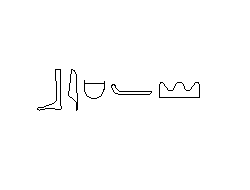
Peninsula in the Red Sea, in the northeastern corner of Egypt. The Egyptians mined copper and turquoise here from as early as the 3rd Dynasty. The most important turquoise mines were at Wadi Maghara and Sarabit el-Khadim. Several kings, including Djoser and Khufu, were depicted as the protectors of the mines in the Wadi Maghara. The goddess Hathor, who was associated with ores and minerals, was also called 'The Lady of Turquoise'. A temple near the mines of Sarabit el-Khadim was dedicated to her. Other gods associated with Sinai were Thoth and Sopdu. King Seneferu was also worshipped as a god here in later times. As a result of the mining activities, but also because the northern part of Sinai became an important link to western Asia used for trade expeditions and military campaigns, settlements also grew up there. Texts have been found in Sinai written in so-called Proto-Sinaitic, which has not yet been completely deciphered. It is thought to represent an early stage in the development of the alphabet. It only has a few dozen signs, some of which have been borrowed from the hieroglyphic script. It is assumed that the texts date from the Middle Kingdom or the 2nd Intermediate Period, but some scholars believe that Proto-Sinaitic did not develop before the 18th Dynasty. Archaeological investigation in this area only really got under way in the last decade of the 20th century, once digging began for the Salaam Canal.